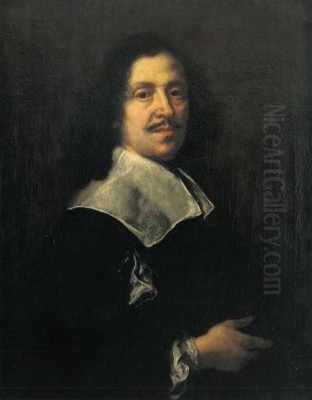
Justus Sustermans stands as a pivotal figure in the landscape of 17th-century European art. A Flemish painter by birth, he achieved extraordinary fame and influence primarily in Italy, becoming the preeminent court painter to the powerful Medici family in Florence for an astonishingly long period. His portraits, renowned for their technical brilliance, psychological depth, and elegant representation of status, bridge the artistic traditions of Northern Europe and the Italian Baroque, leaving an indelible mark on the history of portraiture.
Early Life and Artistic Formation
Born in Antwerp on September 28, 1597, Justus Sustermans, also known as Giusto Sustermans during his Italian career, entered a world brimming with artistic innovation. Antwerp was a major European cultural hub, home to masters like Peter Paul Rubens. Sustermans hailed from an artistic background; his father was Frans Sutermans. Showing early promise, Justus became a member of the prestigious Guild of Saint Luke in Antwerp in 1609, a standard step for aspiring professional artists in the Low Countries.
His initial training in Antwerp likely involved exposure to the prevailing styles, possibly studying under figures like Willem de Vos, though this connection remains somewhat speculative. Seeking broader experience, Sustermans traveled to Paris around 1616. There, he entered the studio of Frans Pourbus the Younger, a highly respected Flemish portraitist who was then working for the French royal court. This apprenticeship proved crucial, refining Sustermans' technique in detailed representation, rich textures, and the formal conventions of court portraiture.
Arrival and Establishment in Florence
The year 1620 marked a turning point in Sustermans' life and career. An invitation arrived from Florence, the heart of the Italian Renaissance and still a vibrant artistic center under the rule of the Medici Grand Dukes. The Medici, renowned patrons of the arts for centuries, sought a talented portraitist, and Sustermans, possibly recommended through Pourbus's network or his growing reputation, was chosen.
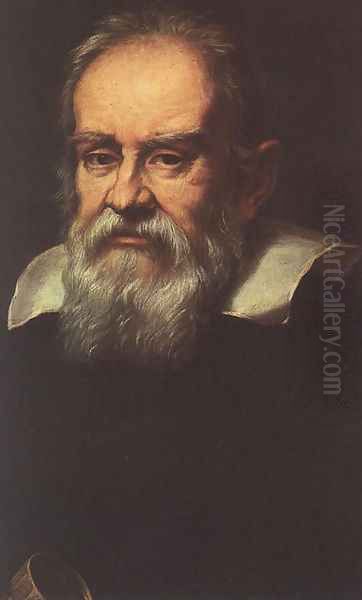
He arrived in Florence and quickly gained the favor of Grand Duke Cosimo II de' Medici. Though Cosimo II died shortly thereafter in 1621, Sustermans' position was secured under the regency of Cosimo's widow, Archduchess Maria Maddalena of Austria, and his mother, Christina of Lorraine, and later under Grand Duke Ferdinand II de' Medici. Sustermans would remain in the service of the Medici court for the next six decades, painting successive generations of the ruling family until his death.
His role as court painter provided him with stability, prestige, and unparalleled access to the highest echelons of Italian society. He was granted lodgings and a workshop, often within the Medici's own Pitti Palace complex, signifying his esteemed status. This long tenure allowed him to document the changing faces and fashions of the Florentine court with remarkable consistency and skill.
Artistic Style and Influences
Sustermans developed a distinctive style that masterfully synthesized various European artistic currents. His foundation lay in the Flemish tradition, evident in his meticulous attention to detail, the rendering of fabrics and textures, and a certain northern realism. His training under Frans Pourbus the Younger reinforced this inclination towards precise and elegant court portraiture.
However, his immersion in the Italian art scene profoundly shaped his work. Florence exposed him to the legacy of Renaissance masters and the burgeoning Baroque style. He absorbed the lessons of Italian colorito, particularly influenced by Venetian painters like Titian and Tintoretto, whose works were well-represented in the Medici collections. This led to a richer palette and often a more dramatic use of light and shadow than seen in his earliest works.
Crucially, Sustermans formed a significant friendship with Peter Paul Rubens during the latter's visits to Italy. Rubens' dynamic compositions, vibrant energy, and painterly brushwork left a visible impact on Sustermans, encouraging a bolder, more fluid approach, especially in larger compositions or more informal portraits. While Sustermans generally maintained a greater degree of formal restraint than Rubens, the influence is undeniable.
He also encountered Anthony van Dyck, another Flemish prodigy who traveled through Italy, including Florence, in the 1620s. Van Dyck reportedly admired Sustermans' work greatly, even intending to include his portrait in his 'Iconography,' a series of engravings depicting famous contemporaries. While distinct in their ultimate stylistic paths – Van Dyck developing a more effortlessly aristocratic and psychologically penetrating style – their shared Flemish roots and engagement with Italian art created a point of connection. Sustermans' work, in turn, sometimes shows echoes of Van Dyck's elegant posing and characterization.
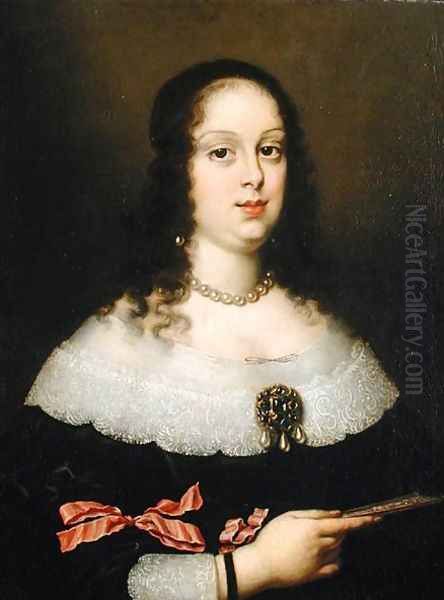
Further interaction with Italian artists occurred, such as his documented work within the studio of the prominent Roman Baroque painter Pietro da Cortona in Florence around 1637. This exposure to the high Baroque decorative style likely further broadened his artistic vocabulary, even if his primary focus remained portraiture. His style thus became a sophisticated blend: Flemish precision fused with Italian grandeur, Venetian color, and Rubensian vitality, all adapted to the specific demands of courtly representation.
The Medici Court Painter
Sustermans' primary duty was to chronicle the Medici family. He painted numerous portraits of Grand Duke Ferdinand II de' Medici and his wife, Vittoria della Rovere, throughout their lives, capturing them from youth to maturity. He also depicted their children, including the future Grand Duke Cosimo III, and other relatives and prominent members of the court. These portraits served essential functions: documenting lineage, projecting power and status, and acting as diplomatic gifts.
His position often required him to travel. He accompanied Medici entourages or was sent specifically to paint members of allied or related noble houses. Records indicate visits to Vienna, Rome, Parma, Modena, Mantua, and Genoa, among other cities. In Vienna, he painted Emperor Ferdinand II and Empress Eleonora Gonzaga, as well as their son, the future Emperor Ferdinand III, whose coronation portrait is a notable example of Sustermans' work for foreign royalty. These travels exposed him to other artistic centers and patrons, including Pope Urban VIII in Rome.
Painting the Medici involved navigating complex protocols and expectations. Sustermans excelled at conveying the requisite dignity and splendor of his sitters. He depicted them in lavish attire, often adorned with jewels and symbols of their rank, set against opulent backgrounds or simple, dark foils that emphasized their presence. Yet, beyond the external trappings, his best works reveal a sensitivity to individual character, capturing a sense of presence and sometimes a hint of the sitter's personality beneath the formal facade.
He painted Archduchess Maria Maddalena of Austria, Cosimo II's widow, in various guises, including a notable portrait depicting her symbolically as Saint Mary Magdalene. This blend of portraiture and religious allegory was not uncommon in the Baroque period. His portraits of Vittoria della Rovere trace her evolution from a young bride to a mature Grand Duchess, showcasing Sustermans' ability to adapt his portrayal over time.
Masterpieces and Notable Works
While Sustermans produced a large body of work, several pieces stand out for their artistic quality, historical significance, or famous subjects.
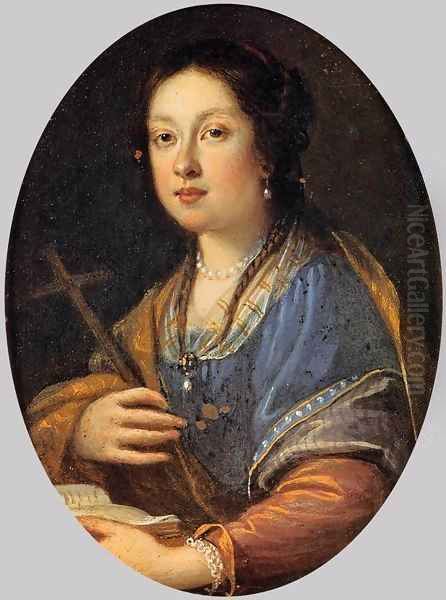
Perhaps his most internationally renowned work is the Portrait of Galileo Galilei (1636), housed in the Uffizi Gallery, Florence. Painted when the great astronomer was under house arrest following his trial by the Inquisition for advocating the Copernican heliocentric model, the portrait is a powerful and sympathetic depiction. Sustermans captures Galileo's intellectual intensity and perhaps a touch of weariness, presenting him not just as a scientific icon but as a human being facing adversity. The direct gaze and thoughtful expression make it one of the defining images of Galileo. A second version exists, now in the National Maritime Museum, Greenwich, London.
The Coronation Portrait of Ferdinand III (1626), depicting the future Holy Roman Emperor as King of Hungary, is a significant example of Sustermans' work for other European courts. Located in the Hungarian National Gallery, Budapest, it showcases his ability to handle the formal requirements of state portraiture, complete with regalia and symbols of power.
His portraits of the Medici women are particularly noteworthy. The Portrait of Maria Maddalena of Austria as St. Mary Magdalene (c. 1625, Uffizi Gallery) combines piety and portraiture, reflecting the Archduchess's religious devotion. The various portraits of Vittoria della Rovere (from the 1620s onwards, primarily associated with the Pitti Palace/Uffizi collections, though versions or related works may exist elsewhere, such as potentially Prato) document her appearance over decades, showcasing Sustermans' consistent skill.
Key portraits of the male Medici rulers include depictions of Grand Duke Ferdinand II de' Medici (numerous versions exist, including notable examples in the Pitti Palace, Florence). These often emphasize his role as a ruler and patron, sometimes including allegorical elements or references to his interests, such as navigation.
Sustermans also painted visiting dignitaries and nobles, such as the Portrait of Prince Waldemar Christian of Denmark (Pitti Palace, Florence), son of King Christian IV, during his travels in Italy. This work exemplifies the international network of patronage Sustermans served.
While primarily a portraitist, Sustermans did engage with other genres. He painted historical and allegorical scenes, such as The Banquet of Cleopatra, demonstrating his ability to handle complex multi-figure compositions, likely influenced by Rubens and Italian narrative traditions. Religious subjects also feature in his oeuvre, including depictions of the Madonna and Child (an example is in the Uffizi Gallery, perhaps clarifying the sometimes confusingly cited "Madonna Domeniche").
A late work like the Man's Portrait (c. 1660), whose location has been cited as both the Jonckheere Gallery in Paris and the Uffizi Gallery (possibly referring to different works or changes in collection), shows his enduring skill in capturing character even in his later years. The attribution and location of some works can occasionally be debated, a common issue for prolific artists of the period.
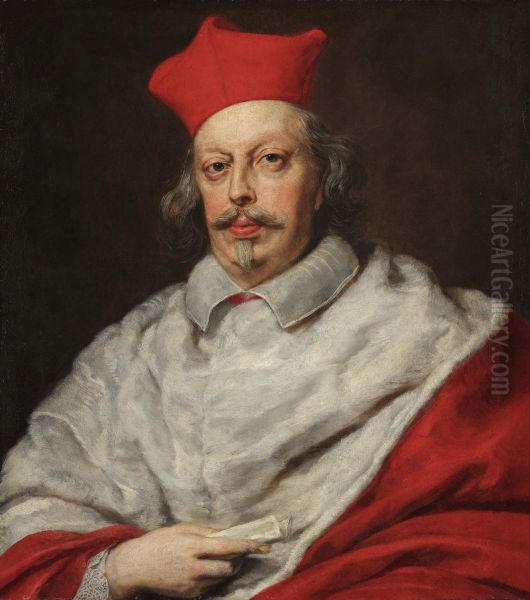
Regarding the Portrait of Maria Theresa of Austria mentioned in some lists with a 1625 date: this is problematic. The famous Empress Maria Theresa lived much later (1717-1780). Sustermans may have painted a different Maria Theresa, or the work might be misidentified or misdated. Portraits of the famous Empress by artists like Jean-Étienne Liotard, Francisco Goya, or Antoine Pesne belong to a later era and different artistic context. Sustermans' connection to that Maria Theresa seems unlikely based on the dates.
Relationships with Contemporaries
Sustermans' long career placed him at the crossroads of artistic exchange. His relationship with his teacher, Frans Pourbus the Younger, provided his initial grounding in court portraiture. His friendship with Peter Paul Rubens was arguably the most significant artistic connection, offering inspiration and likely mutual respect between the leading Flemish painters of their generation.
His interaction with Anthony van Dyck in Florence highlights their shared status as internationally sought-after Flemish portraitists. Van Dyck's admiration underscores Sustermans' standing among his peers. Working alongside Pietro da Cortona demonstrates his integration into the Italian artistic milieu and his engagement with the High Baroque.
His portrait subject, Galileo Galilei, connects him directly to the scientific revolution unfolding during his lifetime, making his portrait a unique intersection of art and science.
Beyond these direct contacts, Sustermans worked within a broader European context populated by major figures. In Spain, Diego Velázquez was revolutionizing court portraiture with his psychological depth and painterly technique. In the Dutch Republic, Rembrandt van Rijn and Frans Hals were exploring new dimensions of realism and character in portraiture. In Rome, French artist Nicolas Poussin championed classicism, while Italian masters like Guido Reni, Guercino (Giovanni Francesco Barbieri), and Artemisia Gentileschi (who also worked in Florence for a period) defined various facets of the Italian Baroque. In Venice and Genoa, Bernardo Strozzi developed his own robust, painterly style. While Sustermans may not have directly interacted with all these figures, their work formed the rich artistic tapestry of the era in which he operated. His Flemish contemporaries also included masters like Jacob Jordaens.
Later Life and Legacy
Justus Sustermans remained active as a painter into his old age, continuing to serve the Medici court. His remarkable sixty-year tenure in Florence is a testament to his skill, adaptability, and diplomatic ability to navigate the demands of court life. His brother, Jan Sustermans, was also an artist and appears to have worked with him in Florence, though details about their collaboration and Jan's independent career are scarce.
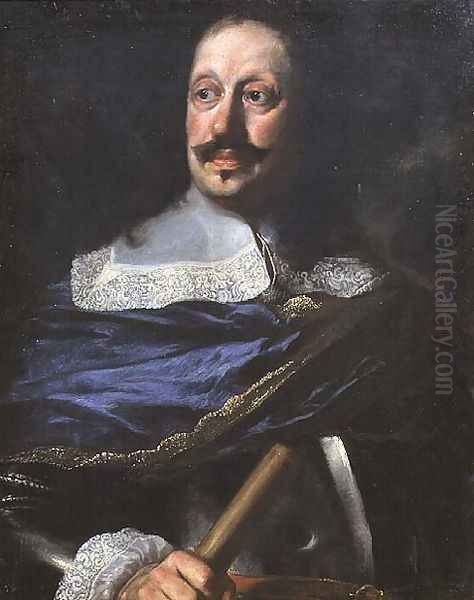
Sustermans died in Florence on April 23, 1681, at the venerable age of 83. He was buried in the Church of San Felice in Piazza, Florence. He left behind a vast legacy, primarily housed within the collections of his lifelong patrons, the Medici. Many of his finest works remain in Florence today, particularly in the Uffizi Gallery and the Palatine Gallery within the Pitti Palace.
His reputation during his lifetime was immense. He was widely regarded as one of the leading portraitists in Europe, and within Italy, some contemporaries reportedly hailed him as the "greatest painter in Italy," high praise indeed, especially for a non-native artist.
Art Historical Assessment
Art history generally holds Justus Sustermans in high regard, particularly as a master of Baroque court portraiture. His strengths lie in his technical proficiency, the luxurious rendering of textures, his ability to capture a convincing likeness, and the dignified elegance he imparted to his sitters. He successfully navigated the challenge of producing state portraits that conveyed status while often hinting at the individual's personality.
His synthesis of Flemish realism with Italian Baroque grandeur created a style that was both internationally understood and perfectly suited to the tastes of the Florentine court. His influence can be seen in the work of later portrait painters in Florence.
However, some critical perspectives exist. Compared to the very greatest portraitists of his age, like Rubens, Van Dyck, Velázquez, or Rembrandt, Sustermans' work is sometimes seen as less psychologically penetrating or dynamically innovative. Some critics have noted a certain formality or reserve in his portraits, and occasionally a darker palette compared to the brilliance of Rubens or the refined grace of Van Dyck. Attribution issues also occasionally arise, given the workshop practices and copying common at the time.
Despite these nuances, Sustermans' contribution remains significant. He was a highly skilled and influential painter who dominated Florentine portraiture for over half a century. His works provide an invaluable visual record of the Medici court and other European elites during a fascinating period of history. His portrait of Galileo remains an iconic image, bridging the worlds of art and science.
Conclusion
Justus Sustermans represents a fascinating case of artistic migration and adaptation. A product of the vibrant Antwerp school, he transplanted his Flemish skills to the heart of Italy, absorbing and contributing to the Italian Baroque. As the favored painter of the Medici for an unprecedented duration, he created a comprehensive gallery of Florentine nobility, executed with technical mastery and courtly elegance. His portraits, particularly the sensitive depiction of Galileo Galilei, secure his place as a major figure in 17th-century European art. His legacy endures in the grand halls of the Pitti Palace and the Uffizi Gallery, bearing witness to a long life dedicated to the art of capturing likeness and status.